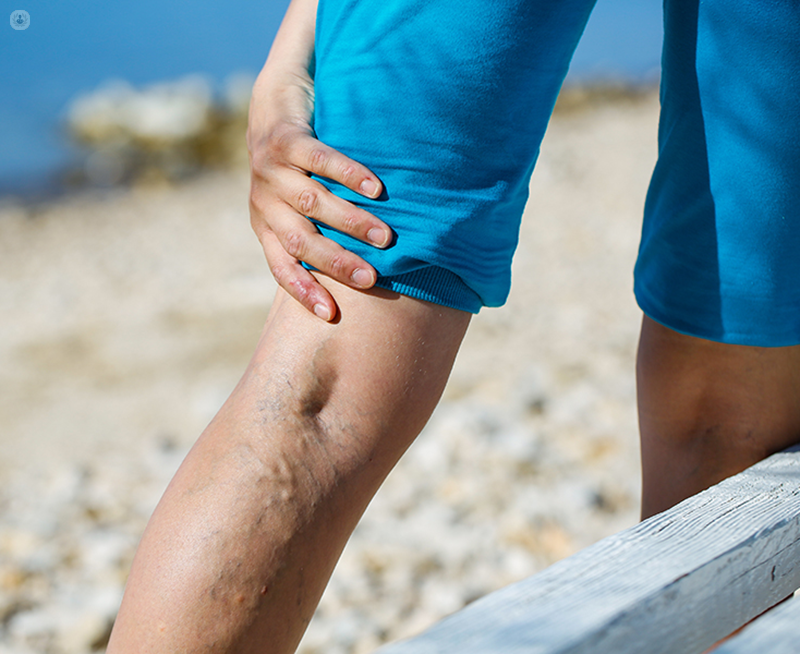Varicose veins: what are my options?
Written in association with:Varicose veins are an unsightly and sometimes painful problem. How can we be rid of these swollen, lumpy veins? Consultant vascular surgeon, Mr Paul Moxey has the answers.

Varicose veins treatment strategy
Varicose vein surgery consists of three key steps:
- An ultrasound scan to diagnose the underlying pathology
- Treatment of truncal reflux in the saphenous veins (if detected).
- Removal of the unsightly and often painful veins that are visible on the surface of the skin
In many cases, simply treating the truncal reflux will be sufficient to lower the pressure within the varicose veins, reducing swelling and discomfort.
Phlebectomy and sclerotherapy procedures to remove the visible varicose veins help to achieve a pleasing cosmetic result.
Thermal techniques
Thermal techniques involve passing endovenous laser or radiofrequency fibres through the saphenous veins to ablate the truncal veins. There is substantial medium-term follow-up data that indicate that these techniques are safe, effective, and deliver good patient satisfaction.
The surrounding tissues must be protected from the heating process and this is achieved by creating a “tumescence blanket”. This is basically cold water and local anaesthetic, delivered by a number of injections. However, the down side is that this can be uncomfortable.
Non-thermal techniques
There are new, modern procedures that do not use heat. This means that the “blanket” of cold water is not necessary and the truncal vein can be ablated by a single injection.
ClariVein® delivers a liquid sclerosant using a spinning catheter to “rough up” the lining of the vein. This makes the treatment more effective. VenaSeal™, on the other hand, is a glue that seals the vein off. Both of these treatments seem encouraging in the short term, but there is no long-term data – only time will tell how they compare to thermal techniques in the long run.
A tailored approach to varicose vein treatment
In all of the above techniques, the surface veins may need to be removed first. This is done either by phlebectomy (small incisions to avulse the vein) or sclerotherapy (injecting liquid or foam sclerosant).
The techniques chosen vary case by case, as each patient is different. By tailoring treatment to each individual case, combining clinical assessment, ultrasound mapping, and selecting the most suitable options from the range of available procedures, an expert vascular surgeon can deliver high-quality varicose vein treatment with great results.
Visit Mr Moxey’s Top Doctors profile to book an appointment.


